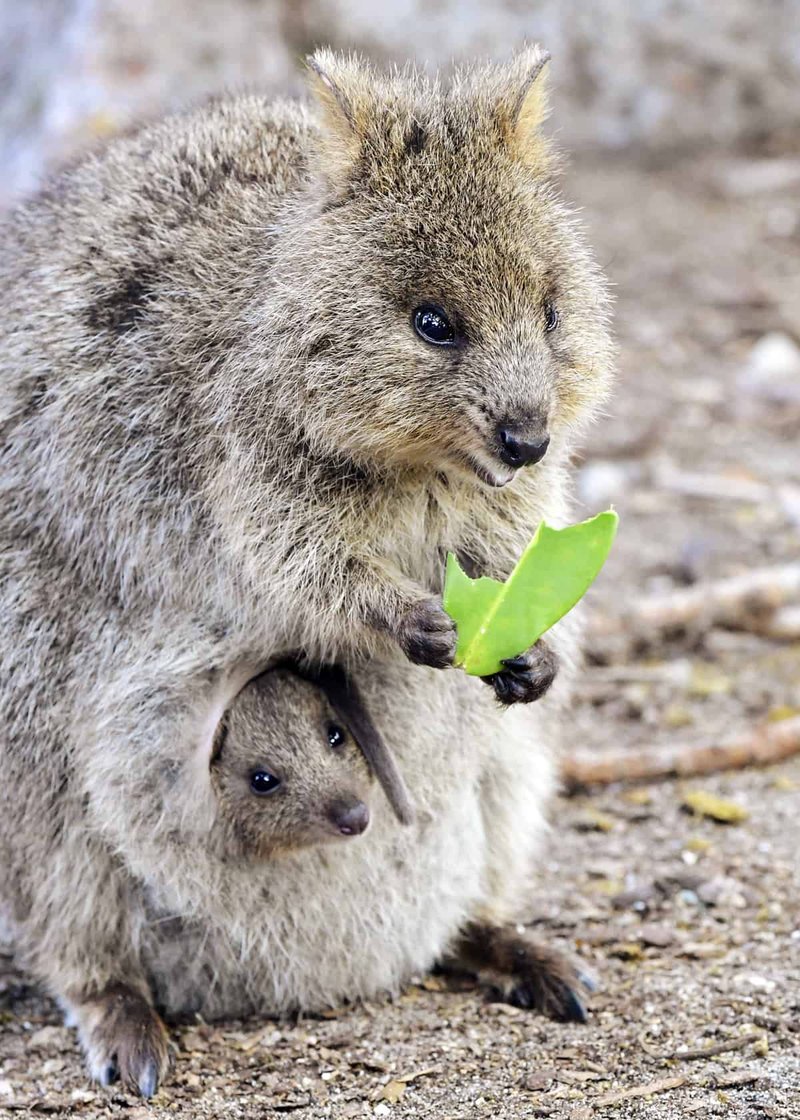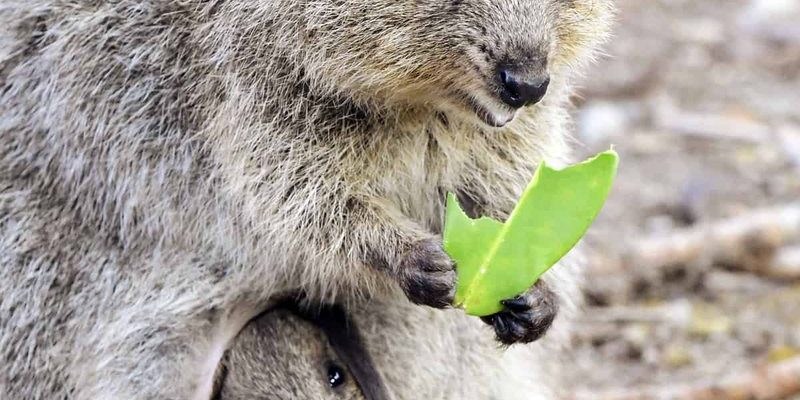
Quokkas are unique in many ways, but one of the most remarkable features is their reproductive strategy. They belong to the macropod family, which means “big foot” in Greek, and they maximize survival for their young ones through some clever methods. It’s a bit like a game of musical chairs—finding the perfect spot in the chaos of nature to ensure their babies thrive. Ready to hop into their world? Let’s explore how these delightful creatures raise their young in the wild.
The Quokka Life Cycle: From Joey to Adult
The journey of a quokka begins when a tiny joey is born. After a gestation period of about just a month, the fully developed yet tiny baby crawls into its mother’s pouch. It’s almost like a little astronaut landing on a new planet! Inside the pouch, the joey attaches to a teat and starts feeding on its mother’s milk.
During this time, the joey relies entirely on its mother for nutrition and warmth. The pouch provides a safe haven, protecting the young one from predators and the elements. After about five to six months, the joey starts peeking out from the pouch, gradually getting used to the outside world. Despite being curious, it often returns to the safety of its mother’s pouch when feeling overwhelmed or scared.
As the months go by, the joey begins to venture further away from its mother, all while still relying on her milk. This gradual weaning process helps the young quokka gain independence at its own pace. By around eight to ten months, the joey is ready to leave the pouch entirely and start exploring its environment more freely.
Nurturing in the Wild: A Quokka’s Approach
Quokkas are known for their social behavior, and this plays a significant role in how they raise their young. Mothers often form small groups with other female quokkas. These friendships create a network of support, offering extra safety for the joeys. It’s like a neighborhood watch but for adorable marsupial families!
When quokka mothers are foraging for food, they often leave their young in the care of these trusted friends. This allows them to have a bit of freedom to search for food while ensuring their babies are still safe. It’s heartwarming to think that they can trust others like this, isn’t it?
One notable aspect is how quokkas communicate with their young. Mothers will make specific sounds to call their joeys back to them, especially when danger is near. The joeys quickly learn to recognize their mother’s voice, which makes it easier for them to reunite after a day of exploring.
Feeding Habits: What Do Quokkas Eat?
When it comes to feeding, quokkas are herbivores. They primarily graze on grasses, leaves, and fruits. Mothers have a crucial role in teaching their young about food sources. Young quokkas learn to identify safe plants to eat by watching their mothers. It’s like learning to cook from a parent—only they’re foraging in the wild!
During the early stages, the mother quokka will eat a variety of plants and then share this knowledge with her joey, showing it which greens are good and which to avoid. This is super important because it reduces the risks associated with foraging for young ones who may not yet know what is safe.
Quokkas have a unique way of digesting their food as well. They often eat their own droppings to extract more nutrients from what they consume. This behavior, called coprophagy, is vital for their survival, especially for growing joeys who need that extra boost of energy.
Protection from Predators: A Mother’s Instinct
In the wild, quokkas face various predators, including foxes and birds of prey. Quokka mothers are instinctively protective and will do everything they can to shield their young. When danger approaches, a mother quokka will often flatten herself against the ground, using her compact size to become less noticeable. It’s like playing hide and seek but with much higher stakes!
Additionally, quokkas have a unique escape strategy. If threatened, they might even drop a part of their tail to distract the predator. This tail can regrow, allowing them to escape with their lives while leaving the predator confused. It’s a clever survival trick that reflects their adaptability in the wild.
Their instinct to protect isn’t just about hiding either. Mother quokkas are known to have some loud vocalizations that serve as alarms to warn other quokkas about potential dangers. This helps to keep the entire group safe, showing just how connected these creatures are to one another.
Social Learning: From Joey to Independent Quokka
As a joey grows, social learning becomes a crucial part of their development. Young quokkas watch and mimic their mothers, learning vital skills like finding food sources and identifying danger. It’s almost like a rite of passage—budding independence paired with the wisdom of experience.
Group dynamics play a role here, too. Quokkas are social creatures, and young ones often play with littermates or other young quokkas. This playful interaction helps them develop essential survival skills while also strengthening social bonds. It’s a bit like how kids learn from each other on the playground, adapting and growing through their experiences.
Interestingly, quokkas can learn from their peers as well, not just their mothers. If an older quokka discovers a new food source, younger ones will watch and imitate. This shared knowledge helps them adapt to their environment more efficiently.
Quokkas provide a beautiful example of nurturing and resilience in the wild. From their gentle, protective instincts to their community-oriented care for young ones, these creatures show how important family and friendship are in the animal kingdom. The way they raise their young—from the cozy safety of the pouch to teaching them about the world—makes their family life fascinating and heartwarming.
Next time you hear about quokkas, remember the stories behind their smiles and the loving care they offer to their young. It’s a little glimpse into the heart of nature, showing us that even in the wild, family matters. So, whether you spot one in a documentary or plan your next trip to Australia, appreciate the wonders of quokka parenting. After all, in their world, every smile hides a story of patience and love.

